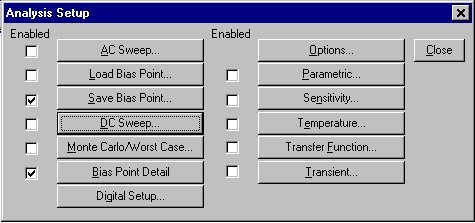

Optimizer: Automatically optimize analog circuits and systems to find the best component values for your performance goals and constraints. Smoke (Stress): Identify increases in junction temperature, secondary break-downs, power dissipation stresses, and voltage/current violations throughout your design. This can be used to identify which parts can have their tolerances widened, reducing cost without sacrificing performance. Monte Carlo: Perform statistical Monte Carlo analysis on multiple components varied across their tolerance ranges to help predict your production yield under different conditions. Sensitivity analysis lets you test circuit performance across the minimum and maximum tolerances for different component values and identify which components are critical to your design goals. Sensitivity: Variations in manufactured components are natural. Some of the more advanced simulations you can use with PSpice Designer Plus include: PSpice goes beyond mere circuit analysis, it also lets you perform temperature and stress analyses on your designs and perform event-driven simulations with its extensive library of pre-modeled parts. Transient Analysis: Set a time period and analyze the response of your circuit. resistor value, current, or voltage) and graph the results.ĪC Sweep: Analyze the frequency response of a circuit (gain and phase). With PSpice, you can perform:ĭC Sweep: Change component value (e.g.

PSpice calculates complex node voltages and branch currents at each frequency across your design, allowing you to place probes and generate waveform plots for further analysis.

PSpice lets you simulate and analyze your analog and mixed-signal circuits within OrCAD. It typically takes a netlist generated from OrCAD Capture, but can also be operated from MATLAB/Simulink. The name is an acronym for Personal Simulation Program with Integrated Circuit Emphasis. PSpice is Cadence’s electronic circuit simulation tool. In this post, we’ll introduce Cadence’s PSpice, and how you can use it to prototype your circuit designs. While you may be tempted to bring out the breadboard and your oscilloscope, there is a simpler solution accessible to anyone already using EDA software: electronic circuit simulation.

So you’ve created a circuit diagram with OrCAD Capture, you’ve already run a design rule check (DRC), and you’re ready to verify your circuit’s electrical performance.


 0 kommentar(er)
0 kommentar(er)
